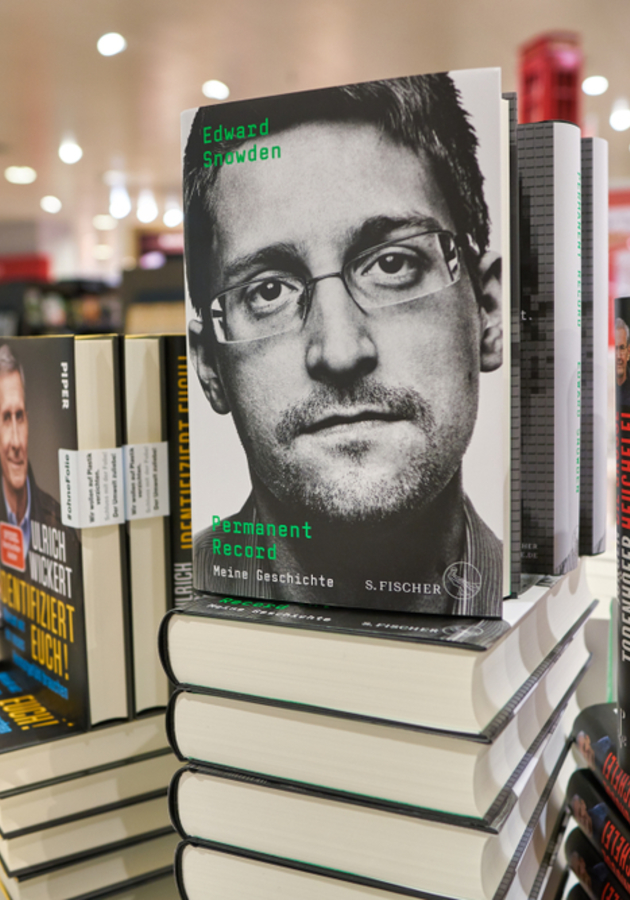No matter the country, the middle class constitutes the majority of voters and is involved in the country’s politics to a large extent.
Unlike others, political calamities require a lengthier period before the general population can spot them and taste the repercussions. In the world of politics, responding to long-term risks should represent the embodiment of competence, but that’s not usually the case.
According to many on the left wing, Trump’s administration embraced short-sighted policies and neglected some serious long-term problems. Is this classic political propaganda, or is it the real deal? It’s up to you to assess the predicament.
In “The Fifth Risk,” Michael Lewis zooms in on the institutional and federal spending programs that require an overhaul. It’s understandable why most people believe that bureaucracy should have its power reduced or – at least – closely monitored.
Let’s dive right in.
The night that shocked the world
The 2016 United States presidential elections elicited a huge interest from the global community. Depending on the outcome, the U.S. Department of Energy (DOE) was preparing to host Democrats or Republicans on the morning of Nov. 9, 2016.
Shockingly, Donald Trump became the 45th U.S. president by harnessing unconventionality as the main thrust of his message.
When Obama took office eight years earlier, many appointees from the Democratic party stormed into the DOE and other federal institutions on the double. However, on the first day, Trump’s officials were nowhere to be found.
The federal buildings were empty as if the whole world had come to a halt. It was dead silence! Before Obama was inaugurated as president, the Bush administration had successfully prepared a transfer of power. Obama wanted to ensure an even smoother transition, and help the new administration to understand controlling the vast and complex federal network of over two million employees.
Thomas Pyle, head of the American Energy Alliance, was put in charge of the “landing team” that Trump requested. He didn’t reveal any information regarding his designation but took everyone by surprise, including Kevin Knobloch, DOE chief of staff, with his lethargy.
Roughly a month after the elections, a meeting was held between Pyle, Knoblock, Energy Secretary Ernest Moniz, and Deputy Secretary Sherwood-Randall. During the meeting, many things were discussed, but Pyle refrained from actively participating in the conversation.
Under the Obama administration, then United States Secretary of Energy Ernest Moniz became a crucial figure in the negotiations with the Iranian government to end uranium enrichment. He was reputed to have unsurpassable expertise in nuclear science and many other areas, but despite all of this, Pyle had no intention in hearing what Moniz had to say.
Eventually, Pyle sent a list of 74 questions and demanded quick answers. The DOE employees and staffers implied that they were unable to prepare the Trump administration for the challenge because the new team wasn’t interested in comprehending the fundamental principles of how the federal government operates.
Probably the only thing that the Trump administration did before the Inauguration Day was to remove all of Obama’s appointees from office. The DOE feared that Trump’s representatives were unaware of the potential calamities that could ensue as a result of ineptitude.
A $30 billion budget was assigned to the DOE to continue its operations and ensure nuclear balance in the world.
In June 2017, the Trump administration still struggled to work out all elements of the federal government. The passing control and responsibility was far from done. The Patent Office was still without its top executive as Trump hadn’t appointed anyone to that position.
The Federal Emergency Management Agency (FEMA), Transportation Security Administration (TSA) and the Centers for Disease Control and Prevention (CDC) were on the same course.
Two former U.S. Presidents, George W. Bush and Barack Obama, had managed to conduct most of their managerial operations after six months in office, but Trump failed to do likewise.
One person did show up, and that was the former Texas governor Rick Perry. In 2011, he even declared that he planned on dismissing three major departments of the federal government:
- Department of Education.
- Department of Commerce.
- DOE (but he didn’t dare to say it).
The DOE had a fearsome reputation and a program to render low-interest loans to companies that sought alternative energy sources. By stimulating energy efficiency, the DOE could benefit in the upcoming period.
The earthquake in politics
With time, the federal government turned into a public spectacle. Never, throughout American history, had the people been so keen to understand what was going on inside the federal buildings as they were under the Trump administration.
Michael Lewis reveals that, by the summer of 2017, he had spoken with dozens of experts regarding the whole risk-facing factor during the transition. The federal government shared the burden and liability for any calamity that could ensue under their watch.
American society needed the expertise to deal with crises of every kind, including a political one.
A throwback to 2005, when Congress passed a $70 billion loan program under the supervision of John MacWilliams: in an attempt to reinvigorate the energy technologies, the federal government intended to stimulate research and innovation in the private sector.
Such a move could then hasten the harnessing of all energy sources and plow back the profits into the market.
The biggest gamble was the stock market, which is not very enthusiastic with long-term pay-off strategies. The level of uncertainty was on the rise because harnessing solar energy is not on the same page as creating a new cool app.
Unlike many others, MacWilliams reaped the benefits of the free market without being subjugated in any way whatsoever. His colleagues at the Heritage Foundation were not given the same opportunity as most of their work fell under heavy scrutiny.
According to his convictions, government intervention could help growing industries in their soaring attempt to increase overall consumption.
After the establishment, the energy industry began to experience its first signs of growth. On a political plan, the loan program had been considered a crushing defeat. What came as a shock was that most of the elites focused their efforts on discrediting the project by pinpointing the Solyndra defeat.
Republicans capitalized on this downside and accused the government of wrongdoing, meaningless spending, and fraud. It became a political burden that no one had the guts to carry out.
In late June 2017, Lewis decided to embark on a journey that would ultimately help him to untangle the political mess that swept across the country. To make some progress, he had to identify the factors that pose a threat to the American lifestyle.
Because the DOE, under Secretary Moniz, was compelled to make a list of disasters that could happen, Lewis had a tough time understanding the stigma. One of the scenarios included a massive relocation of millions of Americans from Eastern Seaboard to the Midwest.
Another scenario was a hurricane hitting Texas, and a third one was a devastating earthquake in the Pacific Northwest that could destabilize America’s power supply.
The fourth one included the electrical grid. Before giving his thoughts on the fifth risk, a strained silence emerged. It seemed as though nothing was explainable.
He assumed that the reason behind this silence was, in fact, the classified information MacWilliams was not allowed to make public. He did say a few words: Project Management. Still, the tension was noticeable because the fifth risk was much more complex than a one-time disaster that could happen anywhere.
MacWilliams’ fifth risk is a description of a society that shies away from exploring long-term solutions and focuses on short-term gains.
The bottom line is, not adopting a broader view of politics often gets into the way of implementing long-term solutions. In a polarized America, where individual responsibility has been looked down upon, change comes at a heavy price. By the same token, politicians concentrate on short term policies in an attempt to garner sympathy and political points.
However, Lewis doesn’t accuse Trump of inventing this political gamesmanship.
People are not prone to risk
Ali Zaidi is a Pakistani-born American who served at the White House Office of Management and Budget (OBM) under the Obama administration. He also provided professional assistance in the implementation of the Climate Action Plan under the President’s orders.
Before President Obama took office, Ali was struck upon hearing his words: “Poverty is not a family value.”
Right about the time Barack Obama won the elections, Ali obtained his college degree from Harvard and sought a place in the new administration. Upon landing a job at the White House, he faced multiple challenges. One day, Ali was assigned a task to take a look at the budget of the United States Department of Agriculture (USDA) and was shocked by its complexity.
The USDA had a budget of $220 billion in assets. This federal institution, unlike others, consists of bipartisan who are required to share the same values, more or less. The staff in charge of this federal branch wanted to prepare a warm welcome for the Trump administration and guide it through the process.
The first day after the elections, no one showed up. Thirty days passed since the USDA staff laid eyes upon the new representatives, which was just one guy, Brian Klippenstein. A couple of weeks before the Inauguration, three more joined in and had a brief meeting with the USDA to absorb the insights on how to handle things. But that wasn’t enough to rejuvenate the USDA.
At the age of 70, Kevin Concannon was coerced to come out of retirement and preside over the Food, Nutrition, and Consumer Services inside the United States Department of Agriculture. Someone had to lay the groundwork until the Trump representatives were ready to take the reins.
In Jan. 2017, they finally arrived. The gravity of the situation required that all employees from the USDA must understand the complexity of running a federal institution. You might get the impression that politicians can be devious, and that generally holds true, but doesn’t solve anything.
The effects of good management
A proficient leader can galvanize others into action and integrate them into a project that is of tremendous value. Therefore, it doesn’t matter what your sphere of interests is, but how you handle long-term risks.
The federal government of the U.S. realized that the private sector should be financed and endorsed its attempt to find alternative energy sources that could bring energetic balance. On the other end, we see that the DOE should have dismissed short-term policies years ago, but failed to do so.
Some things are easier said than done because people prefer swift solutions over complex long-term gains. Lewis criticizes the inability of Trump’s administration in taking command over the federal government.
To that extent, it’s only logical to endorse a smooth transition of power in which the people have representation in every legislative body. But endorsing it doesn’t mean having it!
Final Notes
Not just politicians, but we all have to deal with risks and withstand everyday pressure.
In the same fashion, politicians ought to put ideological differences aside and allocate the country’s resources most effectively.
This book tells a great deal about various political inconsistencies and how to tackle them.
12min Tip
If you are interested in finding more about Donald Trump and how he became one of the most powerful people in the world, then we recommend having a glimpse into ”The Making of Donald Trump.”





























